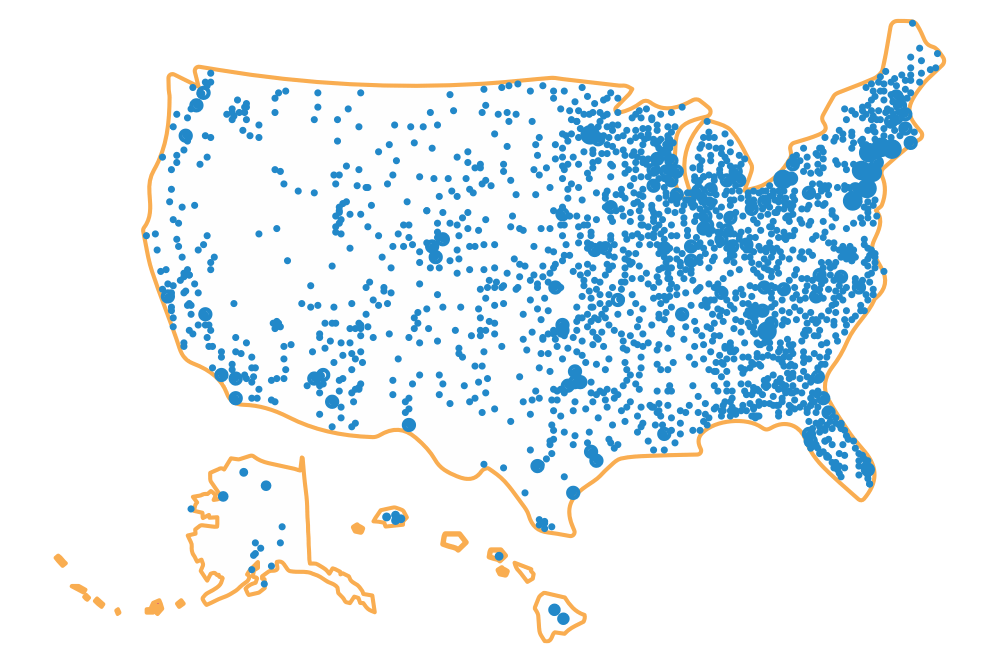Scholarships are free money for your children’s college and career training, and they do not have to be repaid, unlike student loans. Summer is a great time to search for those free funds that can support your students’ higher education without any cost for your family. Scholarships can also help stretch the savings in your Ohio 529 CollegeAdvantage account as far as possible.
According to the 2024 “How America Pays For College” study by Sallie Mae, families use scholarships and grants to pay for up to 27% of educational expenses. These families received scholarships from schools, their home state, non-profits, and other organizations. According to the study, the average amount of scholarships from their college or university was $8,250. That dollar amount shows how scholarships can be a critical part of your game plan to cover your child’s education after high school.
Start the scholarship search early
Some scholarships have deadlines that are at least a year from when these free funds would be released to a school. So, if your student would like to compete for these scholarships to use their first year of college or career training, they may need to fill out the application the summer prior to their senior year of high school.
Another reason to start early is that it can take time for your student to research and find all the available scholarships for which they qualify. It will also take a good amount of time for your student to fill out the scholarship applications and write the necessary essays.
And even if your child is going to college this fall, there’s still time to earn scholarship money this summer for use in the 2025-2026 or the 2026-2027 academic years.
Before starting the scholarship search
By the time your student is in high school they should also pursue a variety of extracurriculars, like school organizations, sports, work, and volunteer activities. This can help them to be a more well-rounded candidate to colleges and organizations offering scholarships.
What is your student passionate about? This could lead to volunteering opportunities to include on their scholarship applications and may even inspire their choice of what to study after high school. Are there any clubs they participate in after school or are they part of a sports team, whether for their school or a travel team?
Do they work a part-time job (to add to their college savings)? These activities not only show off your student’s academic abilities, but they also show that your student can balance responsibilities with good time management skills. And some employers or organizations may offer scholarships for individuals who have worked or volunteered there. Your student can check with their manager or employer to find out.
As a parent, you can check with your employer’s HR department to see if they offer any scholarships as well.
Where to start the search
Start your scholarship search by visiting Federal Student Aid, an office of the U.S. Department of Education. This is the federal agency for which they will complete the Free Application of Federal Student Aid (FAFSA), which will determine how much federal financial aid your student receives. The agency also offer guidance on scholarships and Pell Grants, as well as sources to tap for more information, including the free scholarship search tool from the U.S. Department of Labor.
Also, check the schools and institutions where your child wants to pursue their education after high school. They can point you to other resources like federal agencies, state agencies, and the school’s financial aid office.
Visit high school counselors for their search
An appointment with your student’s high school counselor is also a smart move. Counselors have access to resources and scholarship tools to point your student in the right direction. Counselors also can offer guidance on scholarship essays and help your child prepare for any scholarship interviews. They can also assist your students in identifying teachers to ask for recommendation letters to strengthen their applications.
Free scholarship websites to search
After seeing what resources the guidance counselor can offer, it’s time for your student to search the web. There are many free online scholarship sites to research like Scholly® Scholarships by Sallie℠, FinAid, and FastWeb to name a few. On these sites, your child will create a profile with their academic scores, community, or volunteer service, athletic or academic activities. After supplying that information, students will be matched with scholarship applications for which they are eligible.
Sallie Mae also offers the Paying For College Resource. The website assembles free tools, videos, and checklists to follow as you all prepare for your children’s higher education. It even shows what steps to take to fill out FAFSA and how to understand your financial aid letters. There’s even a monthly $2,000 scholarship for which your child can register for and they don’t even have to write an essay.
FinAid also created a list for the more unusual scholarships that are available.
Free Ohio scholarship websites
The State Of Ohio also wants to help you search for scholarships. Once your child fills in the online form, the site will match them to over 1.5 million scholarships in Ohio’s database.
The Ohio Department of Higher Education (ODHE) can also connect you to multiple scholarships and grants available throughout the state. As the ODHE website states, some financial aid will be decided based on students’ “areas of study (such as teaching, science, engineering, technology, math and medicine), academic merit, financial need, military status, and more.”
To see if there are any local scholarships, do an online search for scholarships offered in your area. Some scholarships are given to a local student on behalf of someone or someone’s memory with similar education plans. Also, local businesses could also offer scholarships for students who want to study in a specific area of study or in a certain vocation or technical skill. Local service organizations like Kiwanis and Rotary Clubs also offer scholarships.
Cities and schools can also offer financial aid through scholarships. For instance, the Say Yes Cleveland Scholarships help Cleveland Metropolitan School District graduates can pay for college tuition to attend college, university, or accredited training program. Greater Cleveland residents have additional scholarship, mentoring, and college and career training resources at CollegeNow. With The Columbus Promise, Columbus City School (CCS) District graduates can take six semesters of classes for free at Columbus State Community College. CCS students will also receive a $500 scholarship per semester. For students in the greater Cincinnati area, look to the Cincinnati Scholarship Foundation to find available area scholarships in that part of the state.
As local and regional scholarships draw from a smaller pool of applicants, there may be less competition and therefore, better odds of receiving these scholarships.
Be sure to apply for small dollar scholarships. If your student earns several of these, their scholarship total will grow. There may also be fewer applicants for these scholarships so your student’s application may stand out in a smaller crowd.
Remember, you should not have to pay a fee to apply for a scholarship. If an organization asks for a fee or credit card number, do not share that information with them and continue your scholarship search elsewhere.
Save with Ohio 529
Well before your child starts their scholarship search, you can save for their future college and career training with Ohio 529 CollegeAdvantage. An Ohio 529 account offers tax-free earnings, tax-free withdrawals for qualified costs, and a state income tax deduction for Ohioans who contribute to Ohio 529.
Since 1989, Ohio 529 CollegeAdvantage has been helping families across the nation save for their children’s and grandchildren’s college and career training. Ohio’s 529 Plan covers qualified costs at any four-year college or university, two-year community college, trade or vocational school, apprenticeship approved by the U.S. Labor Department, or certificate program nationwide that accepts federal financial aid. Learn, plan, and start for as little as $25 today at CollegeAdvantage.
This article was originally posted in August 2019 and has been updated to reflect current information for 2025.


















